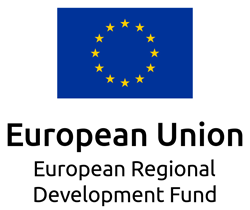„All requirements and expectations for the project have to be clearly specified from the start. This can eliminate costly mistakes and confusion already during the first verification of capa- bilities, risk and hazards related to the project” – Rafał Dąbrowski, Metrix Metal
Equally frequent are situations where first e-mails and requests of buyers refer to a specific schedule only to disregard it during later stages of cooperation. The customer “reserves” chosen production resources for the selected period but does not use them later, leaving the supplier with excess manpower or stock.
The ideal initial request for quote should contain as much information about the project, assumptions and expectations of the customer as possible, and this information should be presented in a consistent and transparent way. Buyers frequently send requests to “test” the suppliers and check current prices. To the supplier, it is critical to know if the project is feasible or not and if the customer is a familiar company.
2. KNOW YOUR SUPPLIER
For new customers, visiting is the best way of meeting the supplier. Such visits are just the right way to start cooperation.
EXPERT’S ADVICE
“Do not only rely on certificates and on line descriptions. Where possible, try to After the visit, the customer can determine the products that visit the supplier’s plant and conduct an the supplier can deliver at competitive prices, the products it audit. You will be able to verify the select specialises in and the types of products that have been manufactured so far. Most importantly, find solutions to ensure safe ed areas, identify potential risks and, most cooperation with the specific supplier”. Suppliers frequently receive requests that are inconsistent with their production profiles (excessive or insufficient quantities or excessive product dimensions).”
The suppliers fill in the forms because they can understand the need for specific information and the designer to learn more about their company. However, many suppliers stress the fact that the best way of starting cooperation is for the customer to visit their company, see their machinery, learn their philosophy and examine their procedures and production capabilities. Such a meeting is certainly more effective than even the best forms, which usually are not filled in correctly and fully due to limited time. Also, if a project is incorrectly described, with excessively demanding criteria, the customer may just lose a potential supplier.
“Nowadays, most potential customers begin their cooperation by sending the RFI form. We
understand that this seems like the natural way of verifying an unknown company for the first
time. However, if we see “must have” criteria that we are unable to meet, we ask the customer
to review them, and only then do we make the decision whether to participate in the project
or not” – Mariusz Chycki, Scanfil
Frequently, due to incorrect research about the supplier, customers send requests that are completely inconsistent with the supplier’s profile. For instance, companies specialising in mass production receive requests pertaining to the production of prototypes. Such cooperation is sometimes possible, but certainly not at a competitive price. Another example from the same industry involves a request from a global soft-drinks giant:
“Reputable customer, tremendous potential, large order volume, neat description of the
company and the project. And then it turns out that the request is for the production of cans,
which we have no interest in whatsoever. The requests have to fit in with our profile. It would
be good if the buyers knew the profile of the supplier they contact.” – Rafał Dąbrowski, Metrix Metal
3. EXPECT A FEASIBLE QUOTING TIME
EXPERT’S ADVICE
“Remember that if you are a new custom- er, your quote will not be ready the next day. Provide the supplier with all neces- sary product specifications, reply to any additional questions and expect to wait at least a week (depending on the industry and the number of items to be quoted)” – Bartłomiej Bącik, Partner, OptiBuy
The busy market and the absence of available production ca- pacities of the suppliers have considerably extended the quot- ing time, particularly for new customers. Suppliers will regard their primary customers as top priority. Quotes for such cus- tomers are usually prepared within 1–10 days. Quoting time also depends on extra requirements to be met during the planned cooperation, e.g. if additional treatment (for instance, surface treatment) is needed.
Quoting takes longer if the piece to be manufactured requires special tools or dedicated tooling. Quoting time also depends on the “attractiveness” of the pieces to the supplier. For in-stance, long batches and small number of operations are “attractive”. In such a situation, quoting time should not exceed 7 days. The least “attractive” requests are the ones with more than 20 items. They are treated in a special way, which is not always satisfactory to the customer. Out of the submitted lists, suppliers select “representatives” of a specific product group. Only the elements representing the specific group are priced. This is done to let the customer know if the prices may be competitive in a specific product group.
Frequently, due to limited resources, suppliers are forced to “queue” quotes. In such cases, suppliers consider if the company is a current or new customer, what turnover does it generate and what the communication and relation with the specific buyer look like. Frequently, the process engineer will stop the quoting process completely until all questions are clarified. Also, there are situations where buyers request a completely unrealistic quoting period, e.g. 4–5 days.
“The time required to quote depends on the complexity of the products and the number of items. A realistic quoting period is usually 2–3 weeks. Naturally, this is true if there are no technical questions, if there are no missing drawings, etc.” – Mariusz Chycki, Scanfil
Transport of the ordered products is another factor that extends quoting time. It is much easier for suppliers to specify EXW prices (without transport costs). Determining the cost of transport for the individual products is difficult and problematic – particularly if the specification is inconsistent or incomplete, if there is no information about the size of the production batch or the packing method. Frequently, transport pricing takes as much 1/3 of the total quoting time.
4. PREPARE THE PERFECT RFQ PACKAGE
An ideal RFQ package should contain all necessary information – product specifications, up-todate drawings, planned demand, batch sizes, details regarding extra treatment, information about the packing method and any other comments that may affect the production process.
“Neat Excel spreadsheets are nice to look at, but we can seldom use them to prepare a quote for our customers. Quotes are created using the existing systems – process engineers generate the index in the ERP system. The salesperson handles additional comments sent by the buyer.It is difficult for us to fill in all of the spreadsheets we received from our customer because then we would have to be copying numbers in up to 50 completely different lists every day. Usually, however, it is in these spreadsheets that we can find the information most important to us: annual quantities, batch sizes, additional information about modifications not included in the drawings or materials” – Rafał Dąbrowski, Metrix Metal
For requests in the casting or plastic forming category, drawings should be delivered in different formats, e.g.: technical drawing and 3D model. This affects the quoting time and the accurac of the quote, and it improves the final time to production. Suppliers frequently receiv drawings without European Standards, which makes it very difficult to quote and requires extra workload. Equally frequent are situations where the drawings… have no dimensions.
“It is not infrequently that we receive outdated drawings, drawings with incorrect descriptions or without any descriptions at all. Specifications have to contain all information about additional processes, e.g. galvanisation or heat treatment. If a customer has specific requirements for packing, surface protection, etc., we need to know this as well” – Marketing Specialist at Sim Gdynia
5. KEEP IN TOUCH WITH THE SUPPLIER
There are situations where suppliers are unable to contact the buyer: no one picks up the phone for a week, and all e-mails go unanswered. If the buyer does not contact the supplier and does not reply to questions, this means that it does not re-gard the project as very important. The buyer is very active if it needs a quick quote – if the supplier has questions regarding a less important project, contact is frequently difficult. Communication with the customer has an impact on motivation as well. The essence of communication is not only to improve the process and save time. It is also a matter of personal context, which can yield extra benefits.
EXPERT’S ADVICE
“From the very first contact, start working on creating a partner relation. During later stages, do not hesitate to call, write and ask. Pick up your calls and reply to messages. Respect the other party and both you and your request will be respected aswell” – Klaudia Stosio, Senior Sourcing Consultant, OptiBuy
“We have many requests where the customer requires a quick quote but takes a very long time to answer any questions” – Marketing Specialist, Sim Gdynia
6. GIVE PRICE FEEDBACK AND COMMUNICATE YOUR DECISIONS
EXPERT’S ADVICE
“The supplier does not learn anything if you only communicate that the price is too high. In fact, it makes the supplier less willing to prepare another quote because it may result in the same reaction. Spec- ify your tolerance threshold and propose a savings range. Most importantly – com- municate your decision to the supplier, whatever it is. Who knows? Maybe you will have to contact the supplier again at some point” – Klaudia Stosio, Senior Sourcing Consultant, OptiBuy
Giving feedback during or after the RFQ process is a sign of re- spect to the supplier, and it contributes to the transparency of the entire process. Suppliers value feedback they routinely receive from buyers. Companies that do not receive informa- tion about the expected price level are less motivated to lower their rates. Feedback such as: “Too expensive. Do something about it” is definitely insufficient. Suppliers are not motivat- ed to re-analyse the RFQ package if, after preparing another quote, they may find that prices are still too high.
“Unfortunately, some of our customers do not inform us when they choose a different suppli- er. Feedback about the competitiveness of our quote is very important because it gives us an opportunity to re-examine the quote and check if a different technology could be used or if the selected treatment was not sufficiently efficient – perhaps other production options need to be considered to lower costs. We brainstorm, which frequently causes us to seek new tools or technologies, which means that we have a chance to develop and acquire new expertise and experience” – Marketing Specialist at Sim Gdynia
“If the customer provides feedback spontaneously, instead of doing this only after being requested, this has a significant impact on our cooperation. We can really appreciate this” – Rafał Dąbrowski, Metrix Metal
LOOKING FOR SUPPORT IN SOURCING ACTIVITIES?
OptiBuy is an international consulting company specialising in procurement management.
Our areas of expertise include procurement cost optimisation (cost reduction
projects), Global Sourcing projects and implementation of dedicated procurement
software solutions (Ivalua, NextBuy).
For more information, visit: www.optibuy.com or info@optibuy.com
Co-authors – OptiBuy experts
Bartłomiej Bącik, Klaudia Stosio, Jiří Kuboš















